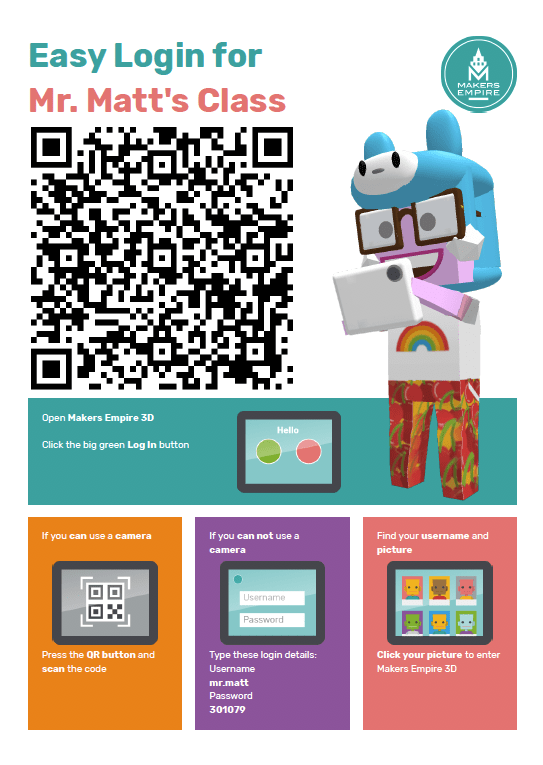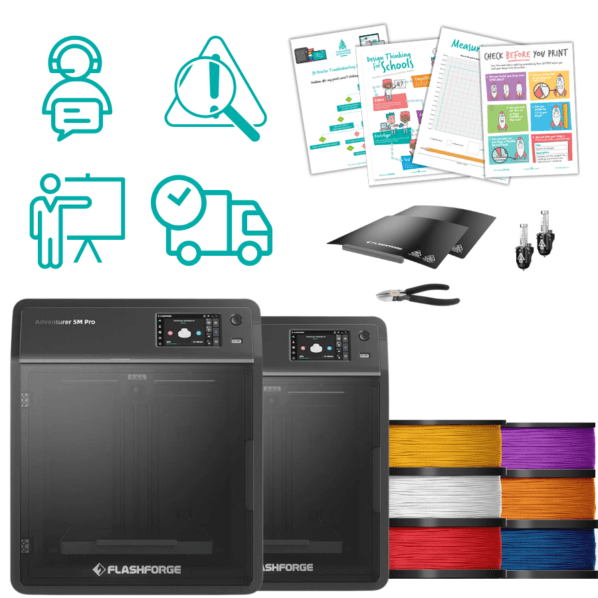We understand that choosing a 3D printer for your primary or middle school can be a difficult decision. While many will be great for high school students or a hobbyist, some are less suited for regular use in a K-8 classroom, Makerspace or library environment.
At Makers Empire, we’ve helped thousands of K-8 teachers in Australia, America, Europe and Asia integrate 3D printing and design into the classroom so we understand what works and what doesn’t.
With this in mind, here is a link to our current list of recommended 3D printers for Australian and the USA. To come up with this list, we evaluated more than twenty 3D printers, reviewed teacher feedback and assessed recent reviews from independent sources. We’ve spent weeks, months and even years testing printers to model expected classroom and school conditions.






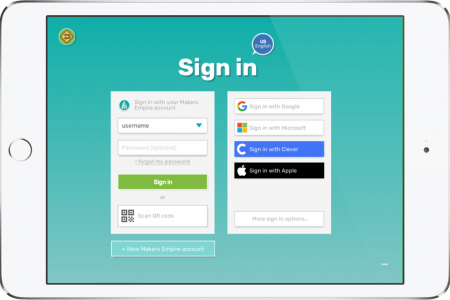
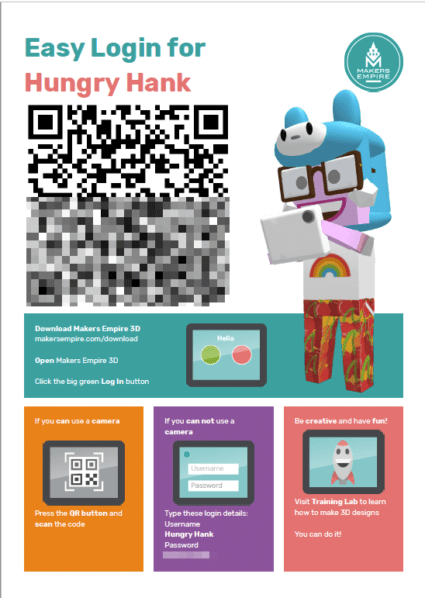
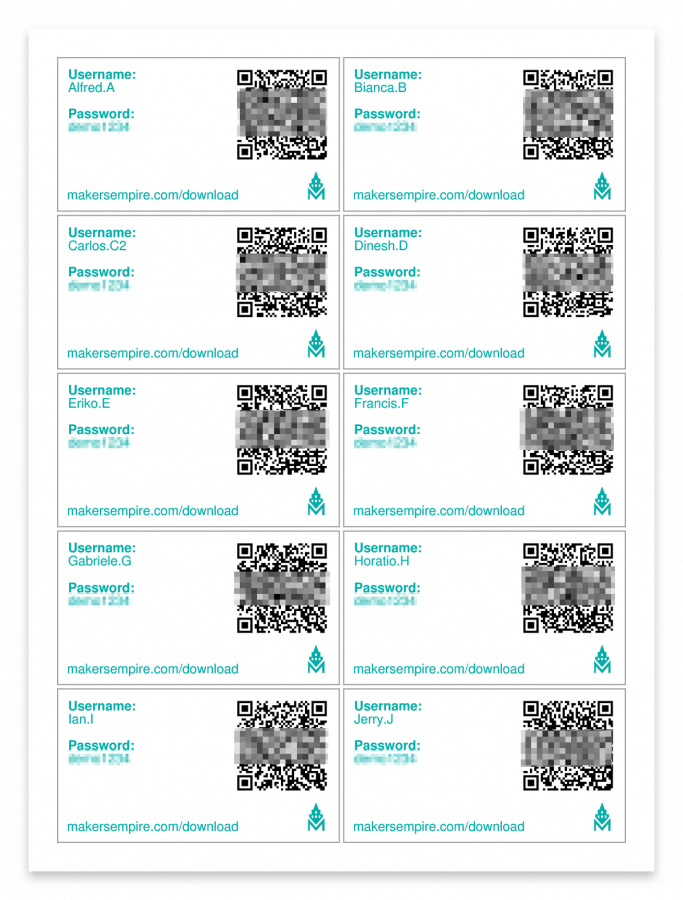 Login Cards
Login Cards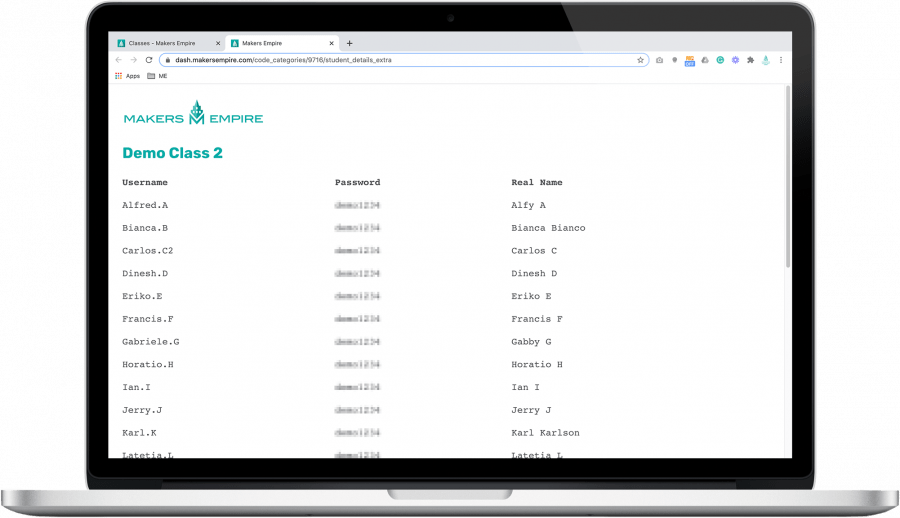 Username and Login List
Username and Login List